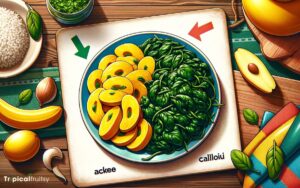Can You Eat Ackee Raw? Explore!
Eating raw ackee is dangerous due to its toxic hypoglycin A content when unripe. Only properly harvested, prepared, and cooked ackee is safe to consume.
Ackee is a staple in Caribbean cuisine but must be eaten with care. It contains hypoglycin A, a toxin that diminishes as the fruit ripens.
The fruit’s ripeness is indicated by the natural opening of its pods, a sign that it’s ready for consumption:
Ackee, when safely prepared, is nutritious and rich in essential fatty acids and vitamins.
Ackee consumption requires strict adherence to safety guidelines to avoid health risks associated with the raw fruit.
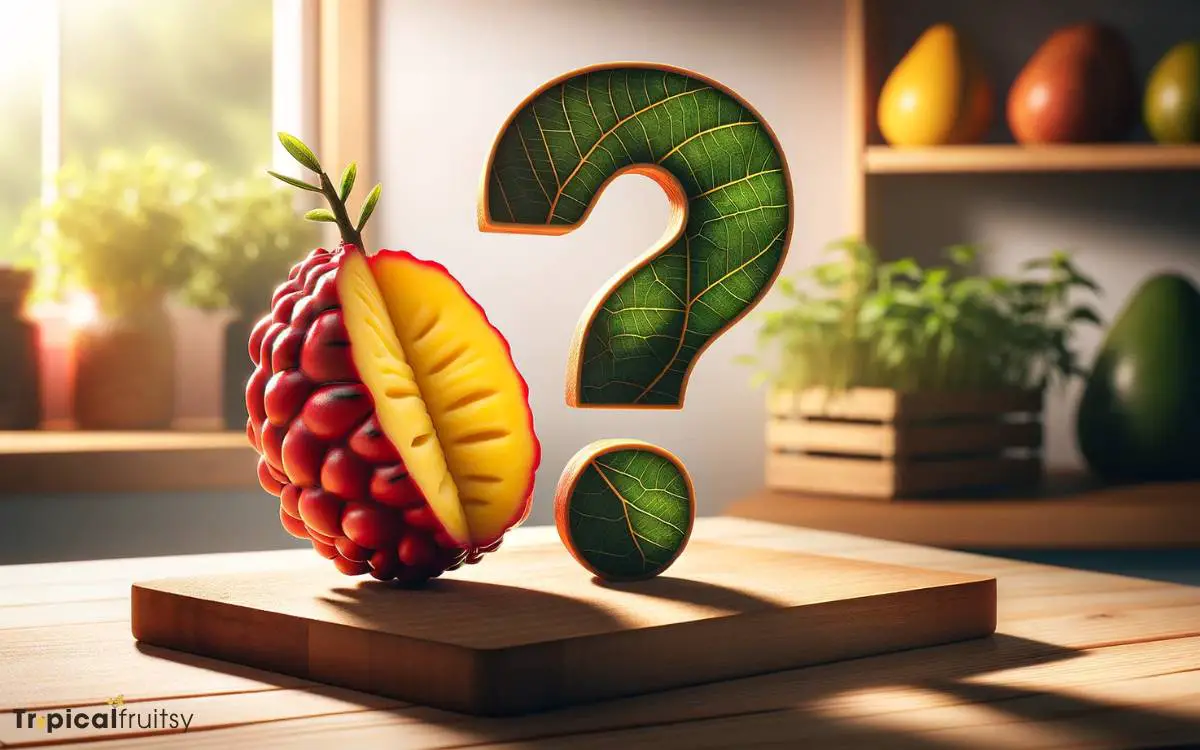
Key Takeaway
Understanding Ackee Toxicity
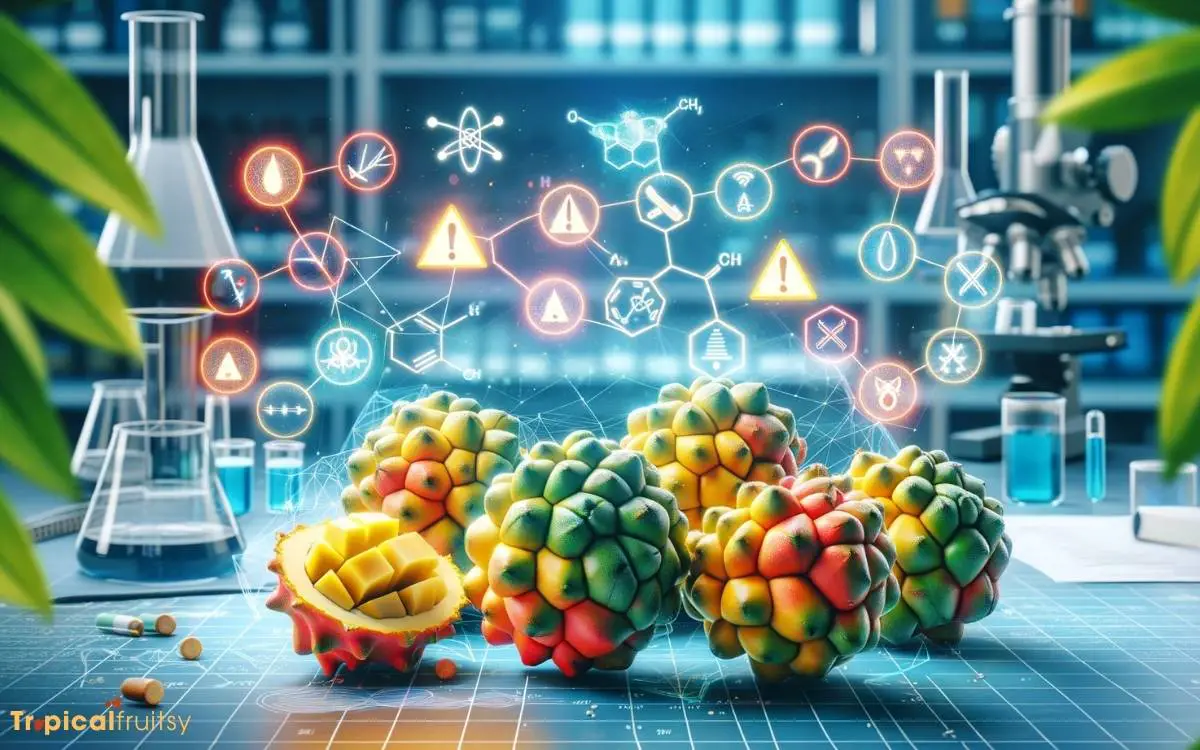
Ingesting raw ackee can result in severe toxicity due to the presence of hypoglycin A, a compound that disrupts normal glucose metabolism.
This substance is a naturally occurring amino acid which, when consumed, can lead to a rapid drop in blood sugar levels, a condition known as hypoglycemia.
The toxic effect of hypoglycin A is well-documented, with numerous cases of poisoning attributed to the consumption of unripe ackee fruit, which contains higher concentrations of this compound.
It is critical to note that the traditional preparation of ackee for consumption involves waiting for the fruit to fully ripen and naturally open before it is deemed safe to eat.
The arilli, or edible portions, must then be carefully cleaned and cooked to degrade any remaining toxins.
The Right Way to Prepare Ackee
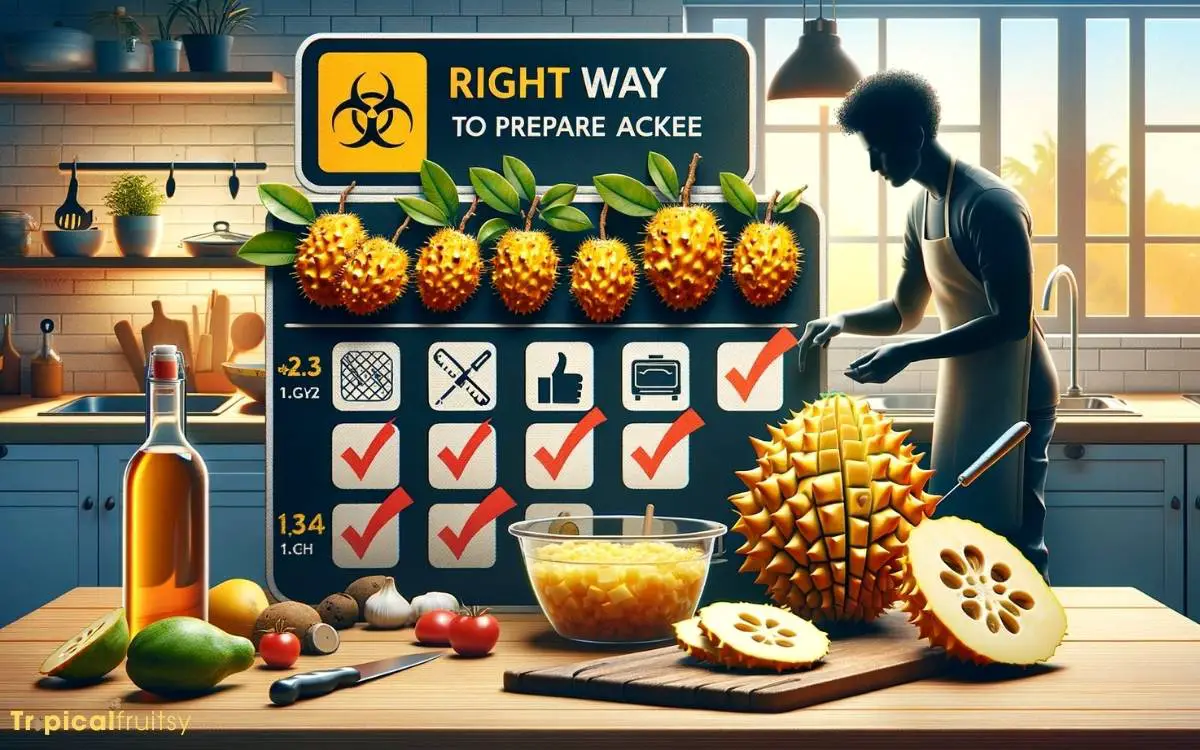
To mitigate the risks associated with hypoglycin A, the proper preparation of ackee involves several critical steps that ensure the fruit is safe for consumption.
Initially, it is imperative that only fully ripened ackee fruit, which naturally opens on the tree, is harvested.
The arils—the edible portions—should be carefully separated from the toxic black seeds and the red fibrous rind. Subsequently, thorough washing is essential to remove any potential residues.
The next precautionary measure involves boiling the arils for at least 30 minutes to degrade any remaining hypoglycin A, followed by discarding the water used for boiling.
This methodical process significantly reduces the risk of toxicity, rendering the ackee safe for incorporation into traditional dishes. It is crucial to adhere to these guidelines to prevent adverse health effects.
Potential Health Benefits Explored

Ackee, when properly prepared, offers numerous health benefits including a rich source of essential fatty acids, fiber, and vitamins.
The fruit’s content of linoleic, palmitic, and stearic acids contributes to a healthy lipid profile, which is crucial for maintaining cell membrane integrity and producing hormones.
Dietary fiber, found in ackee, aids in digestion and could help in managing cholesterol levels. Additionally, vitamins such as vitamin C play a role in immune function and act as antioxidants, while the vitamin A in ackee is important for vision health.
Yet, it is imperative to approach the consumption of ackee with an evidence-based perspective. Ackee must be fully ripe and properly prepared to ensure the elimination of harmful toxins that can lead to severe health issues.
Hence, while the potential health benefits are significant, they can only be safely realized when ackee is consumed in its correct form.
Ackee Consumption Best Practices
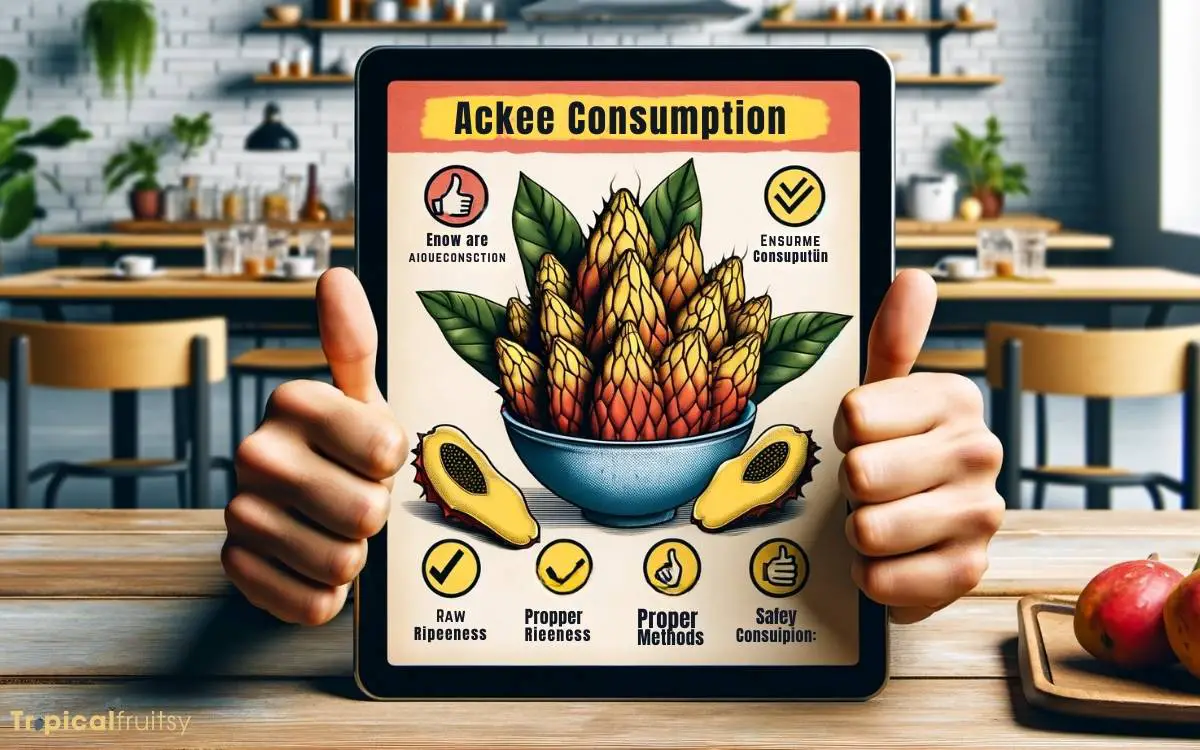
When considering the consumption of ackee, one must prioritize safety by recognizing the critical importance of proper ripeness.
Unripe ackee contains hypoglycin A, a toxin that can lead to severe health implications, making the identification of ripeness not just a culinary concern but a health imperative.
Additionally, adherence to proven cooking methods is essential to ensure that any remaining toxins are effectively neutralized, safeguarding consumers against potential foodborne illness.
Proper Ripeness Identification
Identifying the correct stage of ripeness is crucial for safely consuming ackee, as only naturally opened fruits signify readiness for ingestion.
Consumption of unripe ackee can result in Jamaican Vomiting Sickness due to the presence of toxic hypoglycin A.
Therefore, consumers must be equipped with knowledge of proper ripeness indicators:
- Natural Opening: Ackee must open on its own on the tree, revealing black seeds and a yellow aril.
- Color Indication: The fruit’s rind changes from green to a bright red to yellow-orange hue, signaling maturity.
- Texture and Aroma: A ripe ackee is soft to the touch, and the fruit emits a mild, buttery scent that lacks astringency.
These guidelines are essential to mitigate health risks associated with premature ackee consumption.
Cooking Methods Safety
To ensure the elimination of toxic substances, all parts of the ackee fruit intended for consumption should be thoroughly cooked.
Scientific analysis indicates that proper heat treatment is essential for detoxifying ackee’s naturally occurring hypoglycin A.
Ackee should not be consumed prior to the fruit naturally splitting open, as unripe fruit contains higher levels of toxins.
| Preparation Stage | Description | Safety Note |
|---|---|---|
| Selection | Choose ackee that has naturally split open. | Unopened ackee pods can harbor toxins. |
| Cleaning | Remove the seeds and membrane. | These parts are not edible and are toxic. |
| Cooking | Boil ackee briskly for at least 30 minutes. | Adequate boiling reduces toxin levels. |
| Serving | Discard water and incorporate cooked ackee. | Never reuse ackee boiling water. |
A cautious approach to preparing ackee is vital for health and safety. This leads us to explore ackee’s role in traditional cooking, where cultural practices have honed safe preparation techniques.
Ackee in Traditional Cooking
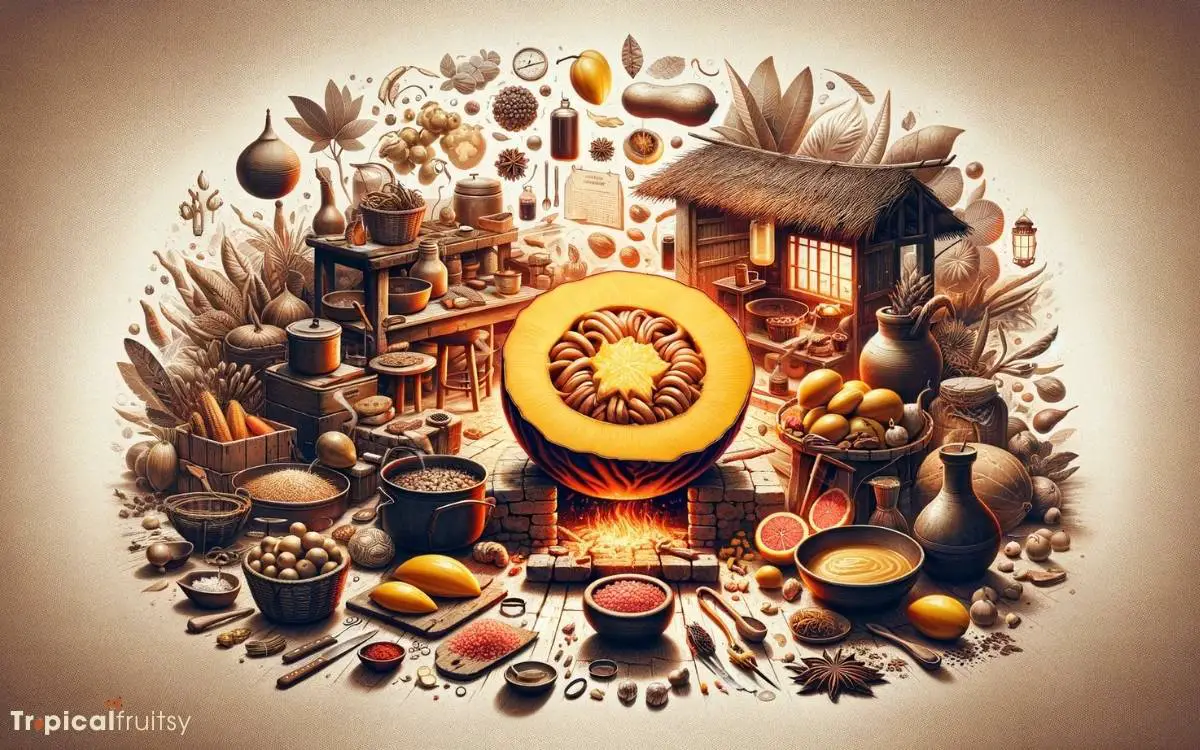
In traditional Jamaican cuisine, the ackee fruit is a staple ingredient, commonly cooked with saltfish to create the national dish. This dish exemplifies the integration of ackee into the fabric of Jamaican culture and cuisine.
However, its usage extends beyond this iconic pairing. Ackee is prepared with meticulous attention to detail to ensure safety and enhance flavor.
Notably:
- Ackee must be fully ripe and naturally opened before harvesting to avoid toxicity.
- It is often boiled for 30 minutes to ensure the removal of any remaining harmful substances.
- The fruit is then sautéed with complementary ingredients such as onions, peppers, and spices, which not only enrich the dish but also contribute to its cultural authenticity.
Adhering to traditional cooking methods is critical for safety and preserving the culinary heritage surrounding ackee.
Is It Safe to Eat Raw Ackee, Especially When It’s Ripe?
Eating raw ackee can be dangerous if not fully ripe. That’s why it’s crucial to know when ackee ripe before consuming it. Ripe ackee is safe to eat, but unripe fruit contains toxic hypoglycin. Properly ripened ackee has a bright red color and bursts open naturally.
Recognizing Unsafe Ackee Signs
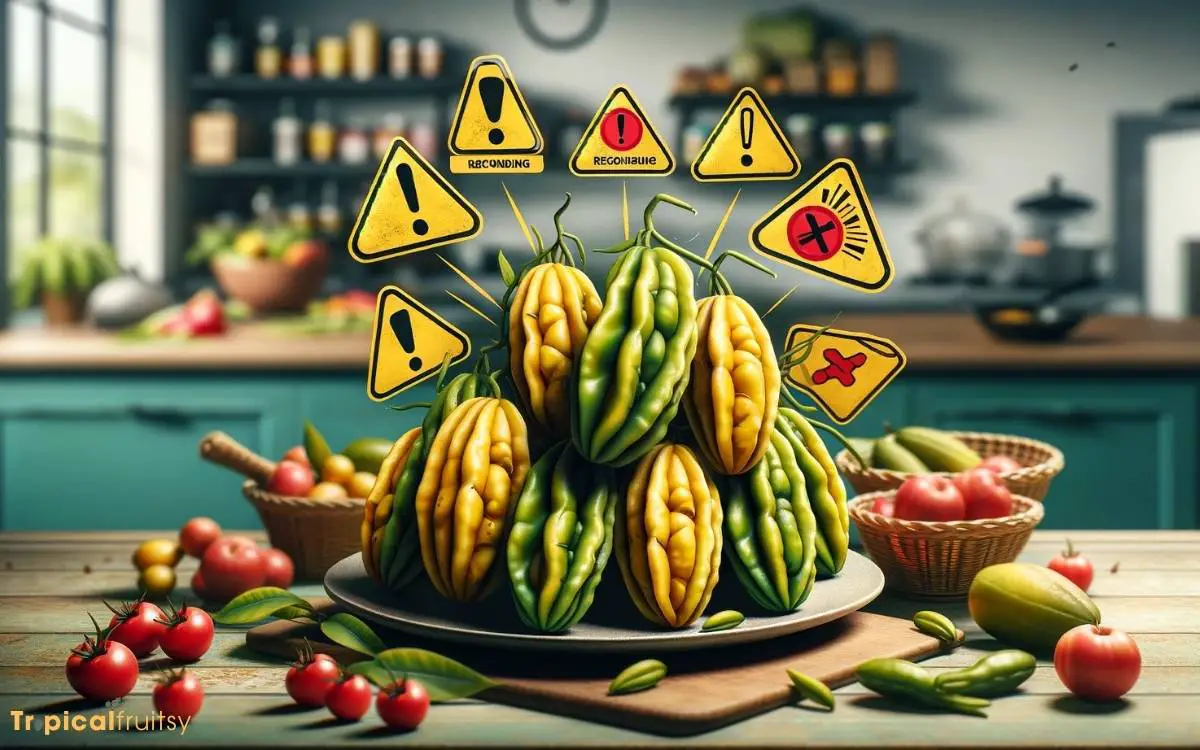
While the ripe ackee fruit is a celebrated component of Jamaican cuisine, it is imperative to recognize the signs of unsafe ackee, which include fruits that have not naturally opened or exhibit an unnatural color, as these may contain dangerous levels of hypoglycin A.
Consumption of improperly ripened ackee can lead to Jamaican Vomiting Sickness, a potentially fatal condition. Therefore, it is essential to be methodical in identifying ackee that is safe for consumption.
Ackee pods should be allowed to ripen on the tree and split open naturally. The arils, or edible portions, should be vibrant yellow to cream-colored, without any traces of red.
Ackee that is forcibly opened, green, or has red tissues should be strictly avoided to mitigate the risk of toxicity.
Conclusion
Ackee must be treated with respect for its toxic potential yet embraced for its culinary value and health benefits. Proper preparation neutralizes its dangers, allowing safe consumption.
Traditional cooking methods have evolved to optimize its qualities, while vigilance remains paramount in recognizing the signs of unsafe ackee.
Thus, when approached with caution, knowledge, and adherence to best practices, ackee can be a nourishing addition to the diet.






